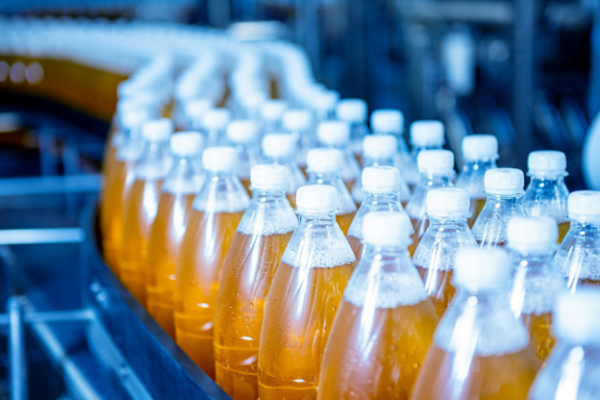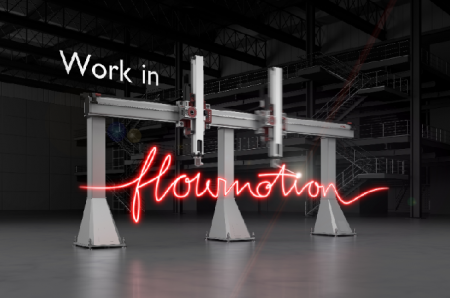
It’s how we can be one of the top exporters of dairy in the world, or how mass-produced food and drinks maintain an obsessive level of quality in the face of careful safety restrictions. The goal of food and beverage industry automation is to keep companies competitive, all while reducing the incidence of human error.
This has gone beyond a nice-to-have and graduated to an essential. Most of the time, if a company isn’t adopting automation in some way, it’s either an artisanal handmade brand or it’s falling behind in comparison to its competitors.
So, if you’re curious about the kinds of technology companies use to automate their processes, you’re in the right place. Let’s examine the rise of automation and delve into some of the key technologies driving the food and beverage industry's automation.
How Food and Beverage Industry Automation Became Standard
Automation’s influence isn’t new, but its scale has exploded in recent decades. Globally, brands like Coca-Cola pioneered the use of robotics, conveyors, and quality control systems to produce millions of identical bottles every day. Closer to home, Fonterra has embraced automation to manage massive volumes of milk, improve consistency, and meet strict export standards.
Why? Because food and beverage industry automation is speedy, it’s accurate, and it’s reliable at a scale that’s tough to replicate with just humans. Automation reduces waste, enhances safety for everyone, and enables companies in these industries to remain adaptable despite changing restrictions.
For the food and beverage sector in Aotearoa, this shift is particularly crucial. We have always been a country that punches above our figurative weight on the world stage, and our exports uphold that trend. We export the majority of what we produce, and global markets demand high quality, traceability, and efficiency. That’s where food and beverage industry automation comes in (plus, the technologies behind it are fascinating).
5 Key Technologies Driving Food and Beverage Industry Automation
So, what are the tools that actually make all of this possible? Here are the five pillars of food and beverage industry automation that are shaping the way our favourite snacks and meals are produced, packaged, and delivered.
Robotics, built tough.
Robotics were once just for car factories, but now food and beverage industry automation has also claimed this technology. Robots handle tasks like cutting, portioning, and packaging at lightning speed. Pinpoint accuracy is also a big win with this technology.
Conveyor systems to automate transport.
Once products are processed, they need to move quickly, safely, and in high volumes. That’s where conveyor systems, automated guided vehicles (AGVs), and even autonomous mobile robots (AMRs) step in.
These systems reduce the amount of manual handling operators have to do, so companies can keep production flowing without bottlenecks.
Quality control the innovative way.
If we’re talking about food and beverage industry automation, the conversation wouldn’t be complete without a serious nod to quality control systems. Humans alone can’t catch every flaw, which is why AI has become indispensable in food production.
High-resolution cameras scan products in real time, identifying defects, incorrect labels, or packaging issues instantly.
Process control and PLC systems.
Behind every smooth production line is – in a sense – a brain. Programmable Logic Controllers (PLCs), HMIs (human–machine interfaces), and supervisory software coordinate thousands of moving parts that manage important processes across the entire line.
There is, of course, some level of human supervision, and these systems enable operators to monitor production at a glance, allowing them to respond quickly if something goes wrong. Without them, the precision and reliability we expect from modern food and beverage production simply wouldn’t exist.
Closing the final mile with packaging automation.
Finally, automation plays a starring role in packaging, which is one of the most visible stages of production. Machines now handle everything from filling bottles and sealing containers to capping, labelling, and boxing.
On the surface, it appears that this is solely about speed. But actually, automated packaging ensures products are always sealed hygienically (no human hands involved). They’re filled consistently and labelled accurately to meet strict regulations, so consumers know exactly what they’re getting when they reach for it on a shelf.
So, the next time you crack open a can of Coke or pour a glass of milk from Fonterra, remember: automation made it possible. These five technologies — robotics, conveyors, vision systems, PLC control, and packaging automation — form the backbone of food and beverage industry automation today.
Together, they ensure that companies in Aotearoa can continue to punch above their weight without their costs outstripping them enormously. In this way, automation will shape the future of this industry for a long time, which is why getting involved in it now will secure your position.
Build the food and beverage industry automation scheme your company needs.
We are CNC Design, your world-class automation partner. As New Zealand's specialist distributor of Siemens technology, we are equipped to provide your company with the Totally Integrated Automation hardware & software, backed by the knowledge it needs to thrive in the fast-moving food and beverage industry.
Get in touch with us today to enquire about next steps.









